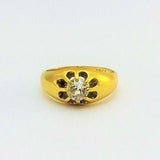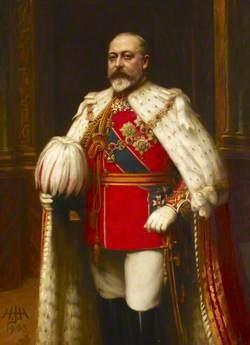
Edwardian jewellery was named after King Edward V11 who was the eldest son of Queen Victoria and Prince Albert. This period was the last to be named after a monarch and was also known as the “Belle Epoch” period after the opulent lifestyle Edward and his wife (Queen Alexandra) kept.
Society was at the height of its elegance and sophistication and fine jewellery was an essential part of the dress code throughout high society. Jewellery changed from being large and flamboyant to delicate and understated. King Edward was passionate about horse racing and so horseshoes were a big influence in Edwardian jewellery.

Advancements in metal fabrication meant that platinum was able to be used in jewellery. Initially it was backed with gold in the same manner as silver, but in 1903 the oxyacetylene torch was invented. This torch could reach the high temperatures necessary to work with platinum, thus allowing jewellery to be made entirely from platinum. Because of the strength of platinum more intricate and detailed pieces were able to be produced from jewellers. Some Edwardian rings were so detailed that they looked like the diamonds were set in lace rather than a metal. As many diamonds as possible were used in any one design.
During this era millegrain came into fashion. This involved a row of tiny platinum beads or hemispheres set around the edges of a piece of jewellery to add a soft and elegant look. New techniques in diamond cutting were discovered thus seeing the rise of marquise, emerald and baguette cuts to the stones.
The start of World War 1 in 1914 brought the Edwardian period to an end. People either hid or sold their jewellery and platinum became scarce due to its use in the war effort.





